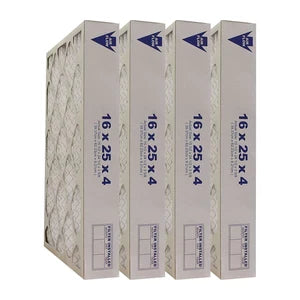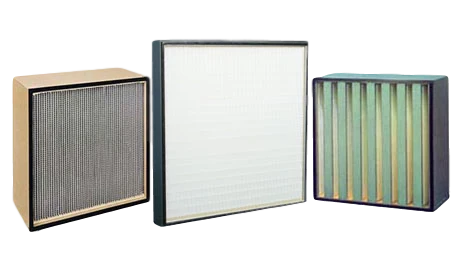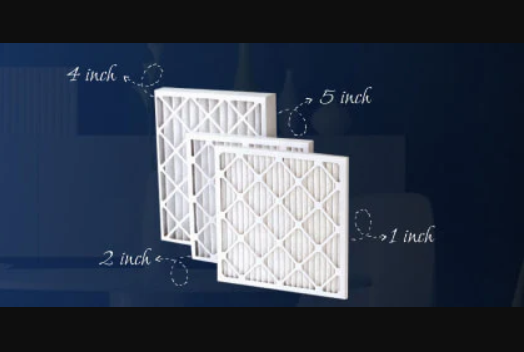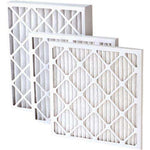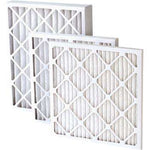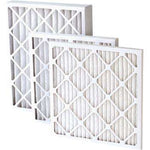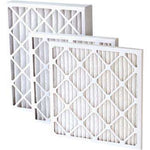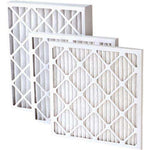Vous avez pas d'articles dans votre panier.
Measuring your air filter is important to ensure you purchase the correct size for your HVAC system.
Here's a step-by-step guide on how to measure your air filter:
Step #1
Turn off Your HVAC System: Before removing the air filter, turn off your HVAC system to prevent any debris from being pulled into the system.
Step #2
Locate the Current Filter: Find the location of your current air filter. Common locations include the return air grille, air handler unit, or furnace.
Step #3
Remove the Filter: Carefully remove the existing air filter from its housing. Note the orientation of the filter, as some filters have arrows indicating the direction of airflow.
Measure the Length and Width:
- Using a tape measure, measure the length (top to bottom) of the filter.
- Then measure the width (side to side) of the filter.
- Record both measurements in inches.
Step #4
Determine the Thickness:
- Measure the thickness (depth) of the filter by measuring the distance from one side to the other.
- Record the thickness measurement in inches.
Step #5
Confirm the Dimensions:
Verify that you have accurately recorded the measurements of the filter. It's essential to double-check your measurements to ensure accuracy.
Note the Nominal vs. Actual Size:
Keep in mind that air filters are often labeled with both nominal and actual sizes. The nominal size is rounded to the nearest inch, while the actual size reflects the precise dimensions of the filter.
When purchasing a replacement filter, make sure to match the nominal size with the actual size of your current filter.
Step #6
Select the Correct Replacement Filter:
With your measurements in hand, you can now select the correct replacement air filter for your HVAC system. Choose a filter that matches the dimensions (length, width, and thickness) of your existing filter.
Step #7
Install the New Filter:
Once you have purchased the correct replacement filter, insert it into the filter housing, ensuring it is positioned correctly according to the airflow direction indicators.
Turn On Your HVAC System: After installing the new filter, turn your HVAC system back on to resume normal operation.
By following these steps, you can accurately measure your air filter and select the correct replacement filter for your HVAC system, ensuring optimal performance and indoor air quality.
Now the question is how to find the Nominal and Actual Size?
The nominal size and actual size of an air filter refer to two different measurements that are important to consider when purchasing replacement filters for your HVAC system:
Nominal Size:
The nominal size is the approximate size of the filter as rounded to the nearest inch. It is the size typically printed on the packaging of the filter and used for identification and labeling purposes.
Nominal sizes are rounded up or down to the nearest inch for simplicity. For example, a filter labeled as 20x25x1 has a nominal size of 20 inches by 25 inches by 1 inch.
However, the nominal size may not always match the actual dimensions of the filter precisely.
Actual Size:
The actual size, also known as the exact size, is the precise measurement of the filter's dimensions in inches. It reflects the true length, width, and thickness of the filter.
Actual sizes are determined by measuring the filter directly, usually with a tape measure. This measurement accounts for any manufacturing variations and provides an accurate representation of the filter's dimensions.
For example, while a filter may be labeled as 20x25x1 (nominal size), its actual dimensions may be slightly smaller, such as 19.5 inches by 24.5 inches by 0.75 inches.
In summary, the nominal size is an approximate measurement used for labeling and identification, while the actual size represents the precise dimensions of the filter. When purchasing replacement air filters, it's important to match the nominal size with the actual size of your existing filter to ensure compatibility with your HVAC system.Measuring your air filter is important to ensure you purchase the correct size for your HVAC system.
Here's a step-by-step guide on how to measure your air filter:
Step #1
Turn off Your HVAC System: Before removing the air filter, turn off your HVAC system to prevent any debris from being pulled into the system.
Step #2
Locate the Current Filter: Find the location of your current air filter. Common locations include the return air grille, air handler unit, or furnace.
Step #3
Remove the Filter: Carefully remove the existing air filter from its housing. Note the orientation of the filter, as some filters have arrows indicating the direction of airflow.
Measure the Length and Width:
- Using a tape measure, measure the length (top to bottom) of the filter.
- Then measure the width (side to side) of the filter.
- Record both measurements in inches.
Step #4
Determine the Thickness:
- Measure the thickness (depth) of the filter by measuring the distance from one side to the other.
- Record the thickness measurement in inches.
Step #5
Confirm the Dimensions:
Verify that you have accurately recorded the measurements of the filter. It's essential to double-check your measurements to ensure accuracy.
Note the Nominal vs. Actual Size:
Keep in mind that air filters are often labeled with both nominal and actual sizes. The nominal size is rounded to the nearest inch, while the actual size reflects the precise dimensions of the filter.
When purchasing a replacement filter, make sure to match the nominal size with the actual size of your current filter.
Step #6
Select the Correct Replacement Filter:
With your measurements in hand, you can now select the correct replacement air filter for your HVAC system. Choose a filter that matches the dimensions (length, width, and thickness) of your existing filter.
Step #7
Install the New Filter:
Once you have purchased the correct replacement filter, insert it into the filter housing, ensuring it is positioned correctly according to the airflow direction indicators.
Turn On Your HVAC System: After installing the new filter, turn your HVAC system back on to resume normal operation.
By following these steps, you can accurately measure your air filter and select the correct replacement filter for your HVAC system, ensuring optimal performance and indoor air quality.
Now the question is how to find the Nominal and Actual Size?
The nominal size and actual size of an air filter refer to two different measurements that are important to consider when purchasing replacement filters for your HVAC system:
Nominal Size:
The nominal size is the approximate size of the filter as rounded to the nearest inch. It is the size typically printed on the packaging of the filter and used for identification and labeling purposes.
Nominal sizes are rounded up or down to the nearest inch for simplicity. For example, a filter labeled as 20x25x1 has a nominal size of 20 inches by 25 inches by 1 inch.
However, the nominal size may not always match the actual dimensions of the filter precisely.
Actual Size:
The actual size, also known as the exact size, is the precise measurement of the filter's dimensions in inches. It reflects the true length, width, and thickness of the filter.
Actual sizes are determined by measuring the filter directly, usually with a tape measure. This measurement accounts for any manufacturing variations and provides an accurate representation of the filter's dimensions.
For example, while a filter may be labeled as 20x25x1 (nominal size), its actual dimensions may be slightly smaller, such as 19.5 inches by 24.5 inches by 0.75 inches.
In summary, the nominal size is an approximate measurement used for labeling and identification, while the actual size represents the precise dimensions of the filter. When purchasing replacement air filters, it's important to match the nominal size with the actual size of your existing filter to ensure compatibility with your HVAC system.